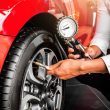Expert Tips For Extending The Lifespan Of Your Vehicle
Your vehicle is not just a means of transportation; it’s an investment that you rely on daily. Whether it’s for your daily commute, road trips, or family outings, your car plays a crucial role in your life. Proper car maintenance and care are essential to ensure that it continues to serve you faithfully and reliably for years to come. Let’s explore expert tips and best practices for extending the lifespan of your vehicle, including the role of car repair and maintenance in preserving your car’s health. You will also get to know about CarBuddy Car Partner Workshop Service, a trusted platform that connects you with verified and reliable workshops across Pakistan, offering expert advice, fair prices, and warranted parts for all your car repair and maintenance needs. Regular Oil Changes: One of the most critical aspects of car maintenance is regular oil changes. Engine oil lubricates the moving parts of your car’s engine, reducing friction and preventing wear and tear. Over time, oil breaks down and loses its effectiveness, leading to increased engine stress and potential damage. Follow your car manufacturer’s recommended oil change intervals and use the right type and grade of engine oil to keep your engine running smoothly. Periodic Car Maintenance: Regular car service and periodic maintenance are vital for identifying and addressing potential issues before they escalate into major problems. A comprehensive car service at a trusted car service station will include inspections of essential components such as brakes, suspension, tires, and fluids. Periodic maintenance not only ensures your car’s optimal performance but also prevents unexpected breakdowns and costly repairs. Tire Care: Your car’s tires are the only point of contact between your vehicle and the road. Proper tire care is essential for safety, performance, and extending the life of your tires. Regularly check tire pressure, rotate tires at recommended intervals, and have the alignment checked to ensure even wear. Additionally, keep an eye out for signs of uneven wear, which may indicate suspension or alignment issues that need to be addressed promptly. Keep It Clean: Regularly washing and detailing your car not only keeps it looking good but also helps protect the paint and body from dirt, debris, and environmental contaminants. Additionally, clean the interior regularly to prevent wear and tear on upholstery and keep the cabin fresh and inviting. Address Car Maintenance Issues Promptly: If you notice any unusual sounds, warning lights, or changes in your car’s performance, don’t ignore them. Addressing issues promptly can prevent them from escalating into more significant problems and potentially costly repairs. Consult a trusted car repair workshop to diagnose and resolve any concerns.
What’s The Best Car Tyre Pressure?
A recent video making rounds on social media has claimed that accidents on Pakistan’s motorways are primarily caused by tyre bursts and high tyre pressure during the summer season. The video suggests that tyre care includes inflating tyres to 25 pounds per square inch (PSI), a standard followed in developed countries can prevent these accidents. However, this claim is misleading and requires a fact check. Misleading Claim The video, shared on Facebook and Twitter, has garnered millions of views and likes. It asserts that many lives are lost due to tyre bursts on Pakistani motorways, attributing this to increased heat during the summer months. It further claims that international standards recommend inflating tyres to 25 to 28 PSI to avoid such accidents. Facts Check On Tyre Pressure Motorway police officials and a road safety expert have refuted this claim. They explain that while temperature fluctuations do affect tyre pressure, there is no universal standard for tyre pressure as it varies depending on a vehicle’s make. Therefore, the suggestion that all vehicles should maintain 25 to 28 PSI to prevent accidents is incorrect. It is crucial to dispel myths that could lead to incorrect practices among vehicle owners. While maintaining appropriate tyre pressure is essential for road safety, there is no one-size-fits-all standard. Vehicle owners should refer to their vehicle’s manual or consult with experts to determine the correct tyre pressure.





